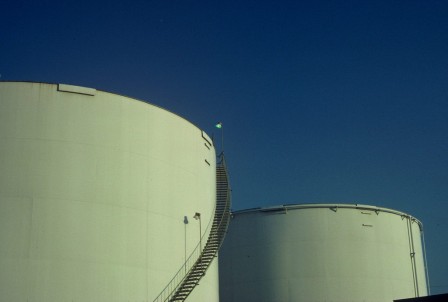Energy: With “Peak-Oil” Passed, It Is Time for a Post-Carbon Age
The World Energy Outlook report 2010 was released by the International Energy Agency (IEA) on November 9th. The implications for the future of our planet are grim and stark unless some urgent and concerted actions are taken. The IEA projects, for its 25-year energy policies scenario, that conventional crude oil production will never regain its all time peak of 70 million barrels per day reached in 2006. In the view of the IEA, crude oil production is likely to stay at a plateau of around 68 million barrels per day, which would mean the end of cheap oil.
Since the peak of 2006, we have entered, without much knowledge of it, a post-peak world. Unconventional sources of oil and gas- such as tar sands, oil shale and natural gas liquids- are far more expensive to extract from the ground and to process into usable petroleum products, and are also environmentally problematic. This means that over the next decade, oil prices will be more expensive, driven mainly by the rapid industrial growth in China and India. For the two new Asian industrial giants, the demand is projected to grow, according to the IEA, by 36 percent by 2035. At this point the price of oil will be over $200 a barrel. By around 2015, the IAE projects that we could have oil price above $100 a barrel.
So only on the issue of the rise of energy cost due to diminishing overall oil supply, the forecast of the IEA’s World Energy Outlook 2010 (WEO2010) is bleak. But at least, and for the first time in its history, the WEO2010 has studied a new scenario that anticipates future actions by governments to meet the commitment they have made to tackle climate change and growing energy insecurity. The report offers recommendation on what must be done and spent, post-Copenhagen, to limit the global temperature increase to 2 degree Celsius.
Developed nations will suffered the consequences in a world going through an energy transition, but for poor nations the impact of it will be a lot worse. Making energy supply secure and curbing energy’s contribution to climate change are the two over-riding challenges facing our world for a sustainable future.
But another key element requires immediate attention and action by governments and the international community. It is the alarming fact that today billions of people lack access to the most basic energy services: electricity and clean cooking facility. According to the IEA, this bad situation is not going to improve over the next 20 years, but could, as matter of fact, deteriorate even further. The WEO2010 estimates that 1.4 billion people-over 20 percent of the global population- lack access to electricity, and that 2.7 billion people- or 40 percent of the global population- rely on the traditional use of biomass for cooking.
In Sub-Saharan Africa, only 31 percent of the population has access to electricity. As a disturbing comparison, residential electricity consumption in Sub-Saharan Africa, excluding South Africa, is roughly equivalent to the electricity consumption in New-York. In other words. the 19.5 million people in New-York consume in a year the same quantity of electricity as the 791 million people of Sub-Saharan Africa. This disparity is not only shameful and unacceptable, it is also not sustainable.
Note: To read the 18 pages summary of the World Energy Outlook 2010 click here. To see key graphs of the report click here.
Editor’s Note: Photographs by Gilbert Mercier
Related Articles
9 Responses to Energy: With “Peak-Oil” Passed, It Is Time for a Post-Carbon Age
You must be logged in to post a comment Login















Pingback: Ramberg Media Group - The News Platform